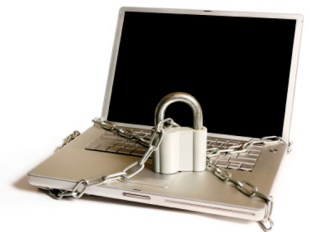Windows PCs are renowned for getting viruses, which is true because Windows allows both you and programs to control several operating aspects of the environment easily (unlike Macintosh which prevents you from easily changing system settings for better stability and “protection” from the end user), as well as because of its still-dominant workstation/personal OS market share.
I’m not exempt from this. I’ve gotten viruses and run them unknowingly too (much to our network administrator’s chagrin). What’s important is to learn from the mistakes, which is some experience I’m going to share now. Here are tips to avoid getting viruses in the first place:
- Don’t trust flash drives. Flash drives, thumb drives, or whatever you want to call them, as well as SD cards and other forms of removeable media (storage that you can move from computer to computer) are one of the most common infection vectors (methods of receiving a virus). If you have AutoPlay on, and you see “Open folder to view files” at the top of the list, be suspicious! Usually, the hard-to-see gray text under it will say “using program provided on the device”. If you’ve already done that, you’ve probably already installed the virus.
- Show hidden files and folders. viruses try to hide themselves using your operating system’s tools for making the folder you see “pretty”. To fix this, go into Folder Options of the tools menu in your explorer window (if you can’t see it by default on Vista or 7, press Alt), go to the View tab, select “Show hidden files and folders”, uncheck “Hide extensions for known file types”, and uncheck “Hide system files and folders (recommended)”. Windows will complain about that last one, because it will show you a lot of things which the OS doesn’t want you to mess around in, such as the hidden “System Volume Information” folder in the root of every drive. However, viruses can easily set themselves as “system files”, so this is necessary if you want to find them. Hit Apply and/or OK when you’re finished.
- Right click, Explore. The safest way to open an unsafe drive is to navigate into it from the command prompt, but for lack of an extensive tutorial on that, the next safest thing to do is go to My Computer, find the drive, right click it, and select “Explore” (regardless of where it is in the list). If “AutoRun” was on top of that list, you should be suspicious.
- Know what to look for. When you’re in the root of a drive, look for autorun.inf. If it’s hidden (shown by being slightly more transparent than other icons), be suspicious. If it’s size is greater than 2 kilobytes, you almost certainly have an infection on that drive. If you want, you can open this file in Notepad and see its content; any “open=” or “action=” lines indicate programs to autorun. If these have suspicious names like “RECYCLER\DSCI0089.jpg” (which isn’t even an executable) or “winlog.exe” (which just looks off from the start), you may want to delete both that file and the autorun.inf. Deleting autorun.inf alone will defuse any viruses on that drive, but won’t delete the dangerous executable itself. Usually, it can’t cause harm, though.
- This works online, too. I’ve seen my fair share of virus sites that turn your searches for “mw3 cheats” into a hopeful looking search that says “download trainer now!”. It’ll try to get you to download either a .exe or a .zip of an .exe. My advice to you: don’t trust these! If the site doesn’t look legitimate, it probably isn’t. This isn’t to say there isn’t legitimate trainers out there, it’s just that they’ll likely be on sites that look well-developed and have an active community (which is obvious if you can find a well-off forum). The same methods work with e-mail, where I’ve been spammed by USPS Failure Notifications, Uniform Traffic Tickets (which know the state I live in), and IRS Audit Alerts that require you to print out a document contained in a .zip file. However, it’s usually a file like ticket.doc.exe, which makes it look like a Word document but ends up being a virus.
- Lastly, if it doesn’t do anything, it’s probably too late.You’ve double-clicked that drive three times, and it hasn’t opened? You’ve been trying to open that .doc file for ages? Your explorer window still hasn’t opened after selecting “Open folders to view files”? Well, it’s probably too late, you’ve likely infected your computer. Even if nothing overt happens, your computer probably:
- has connected to a hacker’s server and is now communicating with it,
- has stolen your email contacts and saved passwords,
- is using your email account to send spam,
- may be commandeered at any time, at a hackers will, to request hundreds of requests for the same site. (Your computer alone won’t do much, but this person probably has hundreds if not thousands of computers just like yours under his command.)
If the latter has already happened to you, don’t fret; I’ll be coming out with an article sometime in the near future discussing the removal of malware from your system. Until then, stay safe.



Mrs. O • Feb 14, 2012 at 5:00 am
This article was very informative! I wish I read it before I got taken–you really have to be careful! I thought that Apple computers were impervious to viruses, but they got me and I had to change a credit card number. You have to be so vigilant and aware.
I look forward to the next article.